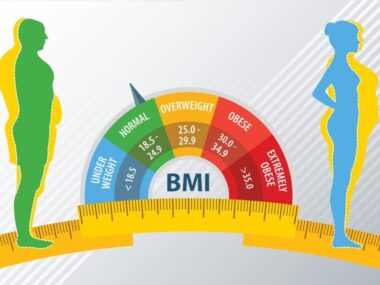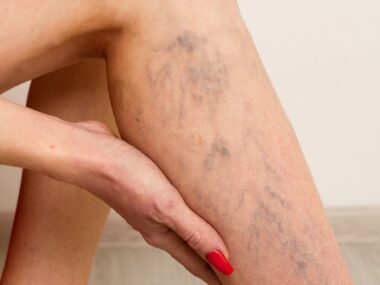Although vaginal yeast infections are rarely serious, you can take steps to avoid getting one in the first place.
Itching in the vaginal region and around the vulva (the opening of the vagina), burning sensations in the genitals, and a cottage-cheese-like discharge are some of the symptoms of vaginal yeast infections, which are most frequently brought on by the yeast species Candida albicans.
The symptoms of a yeast infection, sometimes called vulvovaginal candidiasis in medicine, can be bothersome but are rarely harmful.
Still, you can take steps to prevent yeast infections:
- Practice good hygiene
- Wear the right clothes
- Avoid scented sprays and bath products
- Don’t douche
- Avoid certain medications (when possible)
- Maintain proper diet, sleep, and exercise
- Keep the vagina clean and dry
These precautions are even more crucial if you suffer from recurring or chronic yeast infections, which are defined as four or more yeast infections annually.
What Causes Recurrent Yeast Infections?
While the exact cause of recurrent yeast infections in some women is unknown, there are a number of risk factors that can increase your likelihood of developing them.
These risk factors for developing yeast factors include:
- Things that alter your normal hormone balance, including pregnancy, birth control pills, and estrogen therapy
- Frequent antibiotic use, which kills the beneficial bacteria that normally keep Candida’s population under control
- Uncontrolled diabetes mellitus, which can cause a spike in sugar in the membrane of the vagina (sugar encourages the growth of yeast)
- Conditions that affect your immune system, particularly HIV
- Obesity, which provides more areas of moisture and warmth (such as skin folds) in which Candida can grow
- Clothing that is tight-fitting and synthetic, keeping the vaginal area moist and warm
- Having an anatomy with a short distance between the vagina and anus, where microorganisms frequently live.
According to one study, many women’s vulvovaginal candidiasis recurrences may be caused by a localized immunological deficiency in the vagina.
Sometime after the original yeast infection, this can be the outcome of an allergic reaction to Candida.
An intestinal or vaginal Candida reservoir may also be the cause of recurrent yeast infections. The prevalence of Candida colonization in women is around 20% (and 30% in pregnant women), but symptoms don’t appear until the balance of microbial communities is upset by variables including antibiotic usage, hormone changes, and other circumstances.
Due to spermicidal condoms (which irritate the vagina and make it more vulnerable to infections), C. albicans in the mouth (transmitted during oral sex), and glycerin-based lubricants, sex can further increase the chance of developing persistent yeast infections.
How Clothing Can Affect Yeast Infections
Undergarments made of cotton and silk wick away moisture to keep you dry.
Nylon and other synthetic materials, on the other hand, trap moisture near to your skin and promote the development of yeast. Additionally, allergic and hypersensitive reactions from wearing synthetic underwear may change the environment in the vagina and support the development of yeast infections.
Additionally, lounging around in sweaty workout gear or a damp bathing suit creates an environment where yeast might flourish. Always put on dry clothing as soon as you can.
Heat and moisture might accumulate in the crotch region as a result of wearing leggings, tights, or pantyhose.
If you prefer to wear pantyhose, be sure to wear cotton panties and pick hose with a cotton crotch.
Avoid wearing tight pajamas; instead, choose a nightgown that is fluid and flowing. Furthermore, not wearing underwear while you sleep will prevent yeast growth and keep your genital area dry.
Cleaning your vagina can help prevent yeast infections in addition to keeping you odor-free.
The inside folds of the vagina, where yeast is likely to form, should be cleaned before taking a bath.
Drying the entire vaginal area after a shower or bath is crucial since yeast grows best in damp surroundings.
Certain Products, Antibiotics, and Conditions Are Linked to Yeast Infections
Your chance of developing a yeast infection may rise as a result of perfumes’ potential for irritating the sensitive area inside the vagina.
Additionally, stay away from colorful or printed toilet paper because dyes can irritate skin, as well as scented tampons and sanitary pads.
Douching kills helpful bacteria that keep yeast under control in addition to dangerous bacteria.
Douche products also remove the vagina’s natural protective lining, making you more prone to yeast and other infections, as well as adding properties that could trigger allergic reactions and change the vagina’s pH balance (acidity).
Due to the fact that antibiotic use can destroy healthy bacteria in the body, making it simpler for Candida yeast to grow, this medication has been connected to the start of yeast infections. Take antibiotics only as directed and avoid unnecessary antibiotic use.
Finally, a strong immune system aids in controlling yeast.
Try to maintain a regular sleep pattern and abstain from strenuous activity, caffeinated beverages, and big meals three hours before bedtime. To keep stress levels low, which can harm your immune system, think about practicing stress-reduction methods like yoga, meditation, and regular exercise.
Diabetes and HIV are two immune-suppressing conditions that might raise the risk of yeast infections.
In addition, managing your blood sugar levels is crucial if you have diabetes in order to avoid yeast infections. Yeast’s main dietary source is sugar.
Changing Your Diet May Help Prevent Yeast Infections
Some research suggests that sugar may aid in the proliferation of yeast.
Some specialists have hypothesized that some women’s diets may increase their likelihood of developing yeast infections because of yeast’s fondness for sweets.
In fact, some individuals adhere to a so-called candida diet or yeast infection diet under the assumption that doing so will either completely prevent yeast overgrowth from occurring or will at the very least significantly lower the risk.
Proponents of these regimens claim that a yeast infection diet can help to cure or prevent yeast infections by eliminating:
- Foods containing simple sugars, including many fruits
- White flour and other glutenous grains
- Anything fermented with yeast, such as alcoholic drinks
- Some dairy products, including whole milk
The diet recommends sticking to foods like green vegetables, protein (from wild-caught fish, eggs, beans, grass-fed beef, and chicken), nuts, and herbal tea.
While anecdotal evidence abounds, the candida diet is not (yet) supported by rigorous scientific research.
Probiotics Are Likely Helpful in Fighting Yeast Infections
Probiotics or yogurt with live cultures of the well-known “friendly” bacteria Lactobacillus acidophilus are also advised as part of the candida diet.
Probiotics are also a popular option for treating or preventing yeast infections naturally or at home (as opposed to using prescription medications).
According to the theory, certain bacteria typically reside in the gastrointestinal system, on the skin, and in other locations on the body where they aid in digestion and other physiological processes. In order to stop Candida yeast getting out of control and developing an illness, probiotics can aid in restoring the body’s normal bacterial balance.
Probiotic use for yeast infections is not well supported by significant scientific research, despite the fact that trying them out is not harmful.
Probiotics can treat yeast infections, according to a 2017 review that identified primarily poor-quality evidence in support of this claim





